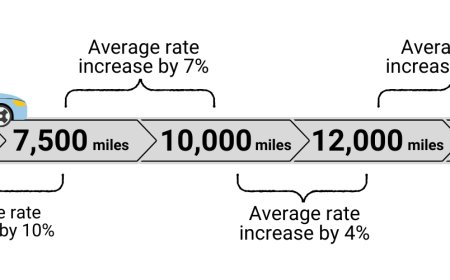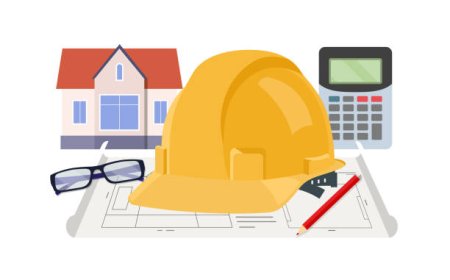What Are the Steps to Start an FHA Refinance in Virginia?
Starting FHA refinance in Virginia means choosing the right path, preparing documents, and improving credit—great steps before VA loan pre-approval.

Refinancing can be one of the smartest moves a homeowner makes—especially in a state like Virginia where the housing market remains steady and home values hold strong. If you already have an FHA loan or are considering switching to one, refinancing can lower your interest rate, reduce monthly payments, or unlock home equity. But what does it actually take to begin?
Understanding the steps to start an FHA refinance in Virginia will help you navigate the process confidently and efficiently. Whether you're aiming for streamlined savings or preparing to get pre-approved for a VA home loan later, getting organized from the start ensures smooth sailing ahead.
Identify the Type of FHA Refinance You Need
Before you apply, know which refinance path best fits your goals:
-
FHA Streamline Refinance: For homeowners who already have an FHA loan and want lower payments or rates with minimal paperwork.
-
FHA Cash-Out Refinance: Allows you to convert home equity into cash; requires a new appraisal and full financial verification.
-
FHA Simple Refinance: For those with existing FHA loans seeking better terms without pulling cash out.
Choosing the right option influences your application requirements and timeline. Each serves a distinct purpose, so this first decision sets the tone for everything that follows.
Assess Your Refinance Readiness
Your current financial profile plays a big role in determining eligibility and lender response. Evaluate:
-
Mortgage payment history: Most lenders want at least 12 consecutive on-time payments.
-
Credit score: A score of 580–620 is often the baseline, depending on the refinance type.
-
Debt-to-income ratio (DTI): Ideally under 43%, but VA guidelines (if preparing for future VA loan pre-approval) focus on residual income as well.
-
Employment stability: Steady income over the past two years strengthens your case.
Virginia lenders take these factors seriously. Improving any of these before applying—even slightly—can lead to better terms or quicker approval.
Gather Your Financial Documentation
Before contacting a lender, put together the essentials:
-
Two months of bank statements
-
Recent pay stubs or Leave and Earnings Statement (for active-duty)
-
W-2 forms or tax returns (last two years)
-
Current mortgage statement
-
Photo ID and proof of residence
-
FHA case number (if applicable)
While documentation varies by lender and refinance type, having these upfront minimizes delays. For cash-out or conventional-to-FHA refinances, expect more paperwork. Being proactive saves time and strengthens your credibility.
Research Lenders Specializing in FHA and VA Loans
Not all lenders handle FHA refinances equally—some avoid them altogether, while others excel at supporting government-backed programs. In Virginia, look for lenders with:
-
FHA and VA loan experience
-
Digital portals for secure online applications
-
Positive reviews from local borrowers
-
Knowledge of regional housing trends
If your long-term goal is to get pre-approved for a VA home loan, find a lender who understands both programs. They can help you refinance now and prepare you for the transition down the road.
Submit Your Refinance Application
Most lenders allow you to apply online, by phone, or in person. You’ll provide:
-
Personal information
-
Property details
-
Financial documentation
-
Desired refinance terms
After submission, the lender reviews your credit, income, assets, and home value. Depending on the option you choose, you may receive pre-approval within a few days—especially for streamline refinances that skip the appraisal and income checks.
Schedule an Appraisal (If Required)
For cash-out and simple refinances, the lender will order a new home appraisal to assess your property’s current value. This step:
-
Confirms eligibility
-
Determines your loan-to-value ratio
-
Impacts approval and loan size
Appraisal timing depends on availability, but in most parts of Virginia, this step moves quickly due to high appraiser density in both urban and rural areas.
Review Loan Estimates and Final Terms
Once your lender reviews your information and the appraisal (if applicable), you’ll receive a Loan Estimate detailing:
-
New loan amount
-
Interest rate
-
Monthly payment
-
Closing costs
Compare this to your current mortgage terms and confirm that the refinance truly benefits you. Ask your lender to clarify anything that feels confusing—transparency at this stage is essential.
Lock In Your Interest Rate
Interest rates fluctuate, and locking in your rate protects you against increases. Virginia lenders typically offer rate locks for 30 to 60 days, depending on your application progress.
Once you’re satisfied with the terms and rate, let your lender know you're ready to proceed. This ensures pricing stability and secures your loan moving toward closing.
Prepare for Closing
Finalizing your FHA refinance involves signing documents and verifying details. You’ll:
-
Review the Closing Disclosure (provided at least three days before signing)
-
Confirm your identity and information
-
Provide funds for closing costs (unless rolled into the loan)
-
Sign the new loan agreement
In Virginia, closings can happen in person or remotely, depending on lender flexibility and location. After closing, your new loan replaces the old one—and you'll begin making payments based on the updated terms.
Use Your Refinance as a Stepping Stone to VA Loan Pre-Approval
Refinancing through FHA now doesn’t mean you’ll be locked in forever. If you’re eligible for a VA loan due to your military service, restructuring your mortgage today can:
-
Lower your debt-to-income ratio
-
Improve your credit score
-
Increase your residual income
-
Show consistent mortgage payments
These factors are crucial when you apply to get pre-approved for a VA home loan. Virginia lenders familiar with both FHA and VA programs can guide you through this financial evolution seamlessly.
Conclusion
Starting an FHA refinance Virginia isn’t just about better payments—it’s about planning smart. Whether you’re streamlining your loan, unlocking equity, or preparing to get pre-approved for a VA home loan later, the process becomes much easier when you know the steps. Choose the right refinance path, gather your documentation, work with an experienced lender, and be proactive throughout the journey. Your home isn’t just where you live—it’s one of your most valuable financial assets. Make it work for you.



































